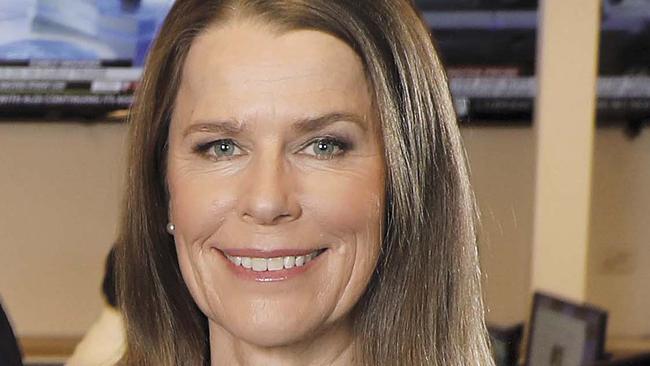How Credit Suisse, AGL and the NAB are tackling ESG
A new set of priorities underpins investment choices for our biggest companies.

“Everyone needs a windmill in their annual report,” a top executive from one global fund manager tells me. Such is the pile-on by companies to embrace ESG. “It’s got to the stage where the risk allocation in some of these projects — well you really should be walking away,” he says.
There is obviously a lesson there, because in the future ESG will need to align with long term value for shareholders. Whether it’s a banking royal commission, COVID, climate change or the rise of woke, more and more company chiefs are walking the walk on environment, social and governance.
There are still a few who do not. Warren Buffett, the Sage of Omaha famously in 2019 decreed he was only investing in wind because the government was paying him to do so and that boards should not be imposing their views of “doing good” on society. In Buffett’s 14-page annual letter to shareholders released in late February, there was not one mention of the words climate or social or governance.
Mostly, however, boards and their shareholders are shifting to the view that companies with purpose can create lasting value.
CEO of National Australia Bank Ross McEwan says climate change is top of mind for almost every board and executive at the big end of town.
“The large businesses all have this on their agenda now and we should be pleased with how it’s starting to impact Australia and the plans for big business,” McEwan says.
“We will start with larger businesses, they will influence their suppliers, which will be a lot of small and medium sized businesses and I think the result over time will be pretty good.”
Global wealth manager Credit Suisse privately banks about 40 per cent of the top 100 Rich Listers in Australia. Its CEO in Australia, Richard Gibb, sees a growing interest in ESG products and investments from both private banking clients and institutional investors.
“This interest goes way beyond green bonds,” he says, listing issues from slavery and human rights to pollution and social housing.
“Credit Suisse has put sustainability and impact investing at the heart of our strategy. Part of that commitment is to provide at least CHF300bn ($418bn) in sustainable financing to clients over the next 10 years.
“Banks have an important role to play as agents for change and we are committed to playing our part in achieving a more sustainable global economy.”
In Australia, Credit Suisse now has its own internal ESG ratings system on investments for corporate clients in investment banking, based on a sliding scale of where clients sit in their transition to greater sustainability.
One of the most interesting businesses to watch is ASX top 50 company AGL: Australia’s largest electricity generator, historically an owner of coal and gas generation and now the largest private investor in renewables. It is no exaggeration to say that the transition at AGL is moving the entire energy market. AGL chief executive Brett Redman says the community expects a more inclusive perspective from its leaders: “Twenty years ago, it was unchallenged that capitalism and market theory was the right way to go, in its purist form. Today there is a growing and strong view globally and expressed here in Australia, that there needs to be more balance in the thinking.”
Community wants and needs are now important; social issues balance financial ones. He says: “You see that in a rise of larger government rather than smaller government, and by larger I don’t necessarily mean more people but simply more involvement in markets.”
Redman cites the role of government in dealing with COVID and says that in climate and energy, the community is calling on government not to leave things to market forces, but to address community needs more broadly.
“And so from my point of view, you can either resist that — I can fall back to my bachelor of commerce, the market theory is the only way to go — or I can reflect on the conversations I have with my friends about what people are expecting in businesses and society, and get on with doing that broader role, which is both delivering for shareholders a good return, but also delivering for the community the service they appreciate and need.”
The Business Council of Australia chief executive Jennifer Westacott says that the European push for a carbon border tax, as car makers demand low carbon steel, could create a de facto carbon tax here. That puts further pressure on businesses to take the lead on decarbonisation.
Two remarkable examples of ESG this year have come from global companies whose leaders are based in Australia: AstraZeneca and LeapFrog.
Pascal Soriot, chief executive of the global pharmaceutical giant, is rolling out three billion doses of the AstraZeneca vaccine in 145 countries from his home in Sydney. And he is doing it at no profit to the company.
“We decided to do this because we thought that is right thing to do. ‘Doing the right thing’ is one of our values,” Soriot says.
“We partnered with Oxford University and for them also it was important to do it for no profit. And the reason is that if you don’t vaccinate the whole world everybody remains exposed. If you don’t offer to all, first it’s not fair, but secondly you give the virus an opportunity to mutate in a huge number of people and then it comes back and infects Europe and the US with a mutation that is resistant to the vaccine.”
AstraZeneca’s share price performance over 12 months lags that of Pfizer and Moderna, which will generate billions in revenues from vaccines. But Soriot says: “I haven’t heard anyone complain and our shareholders are thankful for the communities they live in. Secondly, they are shareholders of AstraZeneca but also shareholders of the world stock market. One objective is to save lives, another is to restart the economy around the world. As soon as we can restart economies, the stock market will go up so they benefit from this.”
The second ESG example is LeapFrog Investments, a showcase of how investing can deliver both a social or environment impact and a financial return. This is impact investing, or as founder and CEO Dr Andy Kuper calls it, “profit with purpose”.
Since Bill Clinton launched LeapFrog in 2008, the businesses it has invested in across Asia and Africa have grown on average 30 per cent a year on the megatrends of half of humanity getting smart phones and the development of telemedicine.
LeapFrog reaches 212 million people with healthcare or financial services and provides direct employment to more than 130,000 people.
“No one else has a data set of so many millions of emerging customers,” Kuper says. “(And) the ability to mine that and say: ‘What do these customers really need, what products do they need? How should we design companies to best distribute to them? How do we develop the metrics for that?’”
In March, with the help of his mentor, Australia’s most connected businessman David Gonski who sits on the company’s Global Advisory Board, Kuper pulled off a coup. LeapFrog landed $US500m ($650m) of investment funding from Singapore giant Temasek, taking its funds under management to $US2bn. The two rainmakers believe the deal will change the landscape for impact investing.
“Temasek coming in now is going to endorse this industry, and watch them; the others will start to go and they are right,” Gonski says. “I sat this morning eating my cornflakes and watching the CEO of AstraZeneca who lives on the north shore of Sydney, which I find amazing — well, we’ve got a second one. This is a big story that we can get international talent like Andy, like Pascal Soriot living here but doing their business worldwide.
“I’m as proud as punch that an Australian is somewhere in that mix. Who would have thought?”


